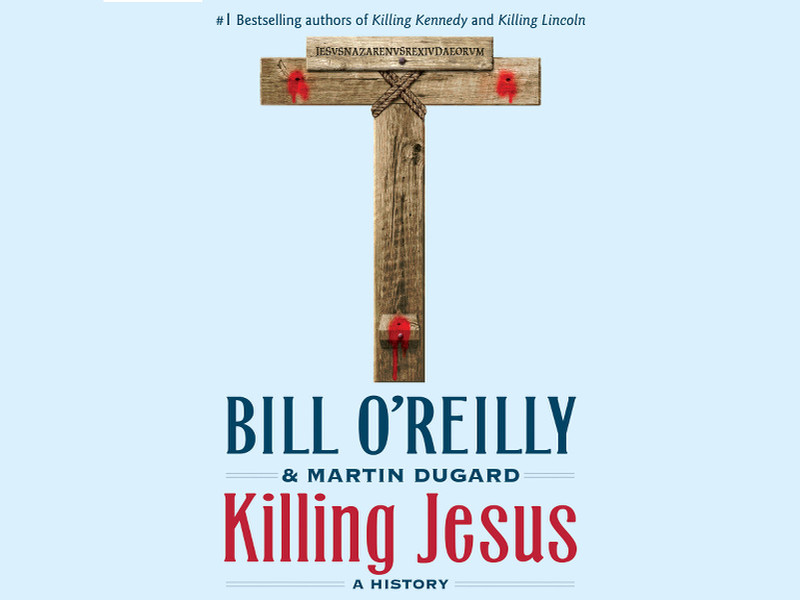
Political commentator Bill O’Reilly and historian Martin Dugard have collaborated to write the bestsellers Killing Lincoln and Killing Kennedy. This week, they released the third volume in their trilogy: Killing Jesus: A History.
I am grateful for this book and believe it will help many readers value Jesus’ life and ministry as history. In a day when “truth” is considered personal and subjective, our mantra is “you have no right to force your beliefs on me.” Christianity, like all faith systems, is treated as superstitious myth by many.
By contrast, O’Reilly and Dugard tell Jesus’ story as objective truth. They chose outstanding scholars as their sources, and provide remarkable context and cultural insight. Though both authors are Catholic Christians, they are careful not to make faith claims for Jesus. Nonetheless, they narrate his story so objectively and with such historical detail that its veracity is clear and compelling.
I am glad to recommend their work. However, as with most books of popular history, I would caution you not to assume that every detail is accurate. I noted 49 questionable statements, some more significant than others.
Some are conjecture stated as fact, such as the claim that prior to his dialogue with the scholars at age 12, “Jesus has never shown any sign of possessing such deep knowledge of Jewish law and tradition.” Or their description of Jesus as he began his ministry in Nazareth: “his family is not the wealthiest in town; nor is he the smartest among them.”
Some are simple errors of fact, such as the claim that Jesus “fed five thousand people in the mountains near Bethsaida.” Actually, “those who ate were about five thousand men, besides women and children” (Matthew 14:21), meaning that he actually fed around 20,000 people.
Some are mistakes of theological history, as when the authors say of Mary Magdalene, “it has long been the tradition of Christian teaching” that she was the prostitute described in Luke 7. Actually, the Eastern church has never accepted this claim. Nor did the Western church before Pope Gregory the Great (540-604), who invented the doctrine that she was a harlot.
And some are interpretive assertions, such as the claim that Judas betrayed our Lord “to force Jesus’s [sic] hand.” This is only one explanation for Judas’ motive; theologians debate several others that are not included in the book.
The authors’ Catholic convictions become apparent in their claim that the Church of the Holy Sepulchre stands over the site of Jesus’ death, with no consideration of Gordon’s Calvary or other options. And with their assertion that Simon Peter was “the eminently stable ‘rock on which I will build this church’ that Jesus speaks of in Matthew 16:18.” Many Protestants would disagree, of course.
At one point, O’Reilly’s famous capacity for hyperbole shines through. He wrote the introduction, in which he says of Jesus’ execution: “The incredible story behind the lethal struggle between good and evil has not been fully told. Until now.” Fortunately, he then moderates a bit: “At least, that is the goal of this book.”
Criticisms aside, I appreciated the authors’ extensive description of Jesus’ Roman context, beginning with Julius Caesar and continuing through his life and death. Their descriptions of Jesus’ trial and death are spot on historically, such as the fact that the nails would have been driven through his wrists, not his palms.
And their observations regarding his legacy and significance are worth quoting in full:
- “To say that Jesus of Nazareth was the most influential man who ever lived is almost trite.”
- This statement is set in our Lord’s lifetime: “Jesus will never write a book, compose a song, or put paint on canvas. But two thousand years from now, after his message has spread to billions of people, more books will be written about his life, more songs sung in his honor, and more works of art created in his name than for any other man in the history of the world.”
- “There is no doubt that Jesus of Nazareth is the most famous human being the world has ever known. But Jesus had no infrastructure. He had no government behind him. He had no corporation. He and his disciples depended upon the charity of others for food and shelter, and they had no organization other than a dozen faithful followers. In the history of mankind, no one has achieved worldwide fame with no outside resources whatsoever.”
In summary, I hope Killing Jesus joins its predecessors on the bestseller list. Wherever it is read, its Subject will be revealed as the God who became one of us, that we might be one with him.











